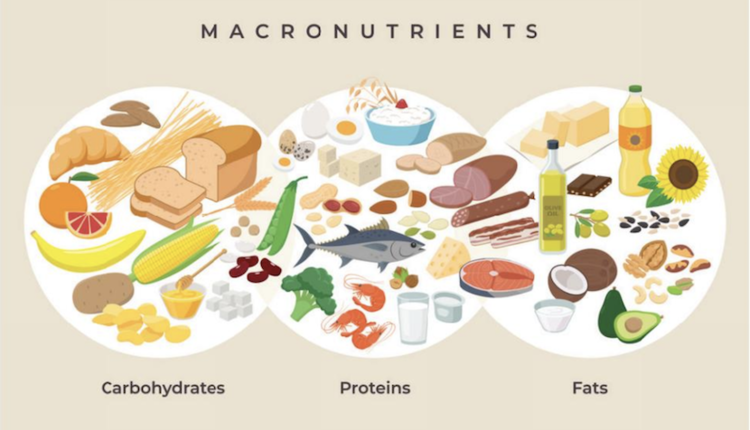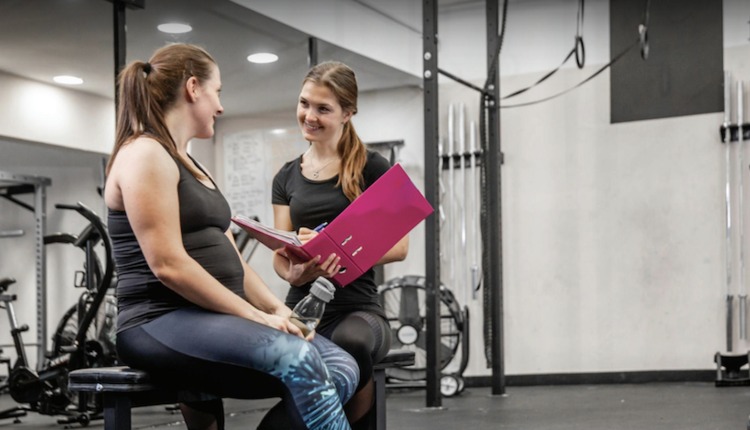
"Metabolism" has become quite the buzzword in fitness and nutrition circles. As a nutrition coach, my clients ask me about metabolism and its relationship to weight loss. A higher metabolic rate is equivalent to weight loss for many people. But is metabolism just that? What if metabolism is responsible for much more than our body weight?
It sets the internal pace of life when we are at rest. It determines our capacity for essential body functions, growth and reproductive fitness. In a nutshell, it defines our odds of survival.
Let's take a deep dive into metabolism.
What Is Metabolism?
Metabolism is the sum of all chemical processes that transform one form of energy into another. As living things, we need continuous energy for our existence. Life as we know it exists because of the metabolic processes that obtain energy from the environment and provide it to support life.
Metabolism breaks down food into energy our body needs for necessary functions like breathing, blood circulation, normal hormone levels and repairing cells. Even at rest, our body needs a minimum amount of energy to execute these functions and maintain a stable internal environment called homeostasis.
There are three main components of metabolism.
- Basal Metabolic Rate (BMR) —This is the amount of energy our body needs to keep functioning at rest. It includes performing essential functions to sustain life. BMR is the most significant portion of energy expended daily.
- Dietary Thermogenesis — Thermogenesis means heat production. All metabolic processes in living organisms produce heat. Eating food produces heat in our bodies because of the energy required for digestion, absorption and storage of nutrients. Research suggests that 5%–10% of our total energy expenditure is due to dietary thermogenesis.
- Daily Physical Activity – Structured exercise like running, swimming and a Zumba class requires us to use energy. Exercise, especially resistance exercise, also helps build muscle mass, requiring more energy. Don't underestimate the effect of daily activities like gardening, home chores and walking around the house or office for energy expenditure. The non-structured exercise plays a huge role in our metabolism.
Metabolism and Rate of Living Theory
Metabolism defines our body's capacity for vital maintenance, growth and reproduction — all these factors are related to our fitness as a living organism down to the cellular level. That's why metabolism reflects "the pace of life."
The metabolic rate of a living being can determine its lifespan based on the "rate-of-living" theory, which suggests that faster metabolism accelerates the aging process and slower metabolism slows down aging. Researchers have found that the slow metabolism of humans is responsible for the slow growth and long lives of our species. We might not appreciate it much but burning less than 50% of our daily energy intake is the main reason for our longevity.
Take the example of your pet hamster, cat or dog. Their lifecycles are much shorter than humans because they approach adulthood much faster than us. A fast metabolism allows these animals to grow more quickly, reproduce more often and unfortunately have a shorter life span.
There are animals on the other end of the spectrum which have a slower metabolism than humans. Turtles have the most extended lifespans ranging from 80 to 200 years in the animal kingdom, because they have very slow metabolism.
While the metabolic rate might indicate the rate of aging in some animals, it's not always the case. Scientists found that birds have high metabolic rates but still have long life spans. Therefore, our lifespan might not depend on our BMR.
Metabolic rate can, however, help us understand the relationship between physical activity, nutrition and daily energy expenditure. Resting energy expenditure determined by basal metabolic rate accounts for the greatest amount of our total energy usage. Raising the BMR can help us use more energy while at rest.
Basal Metabolic Rate Factors
To understand how we can boost our BMR, we must look at the factors impacting our Basal Metabolic Rate (BMR). Some of the factors that have the most significant effect are.
- Lean Muscle Mass — A lot of energy is required to maintain lean muscle mass, which means people with lean muscle tissue will have a higher BMR.
- Significant Calorie Restriction — Eating too few calories slows down the metabolism to conserve the body's energy.
- Age — Children have a higher BMR due to the increasing demand for energy for growth. As we age, metabolism generally slows down.
- Exercise — Regular exercise results in increased lean muscle mass in the body, which helps us burn more calories at rest.
- Nutritional Deficiency — The thyroid hormone in our body controls BMR. A nutrition deficiency of iodine decreases thyroid function and reduces the BMR.
Some of these factors are under our control and can be manipulated to boost our client's basal metabolic rate. But is the metabolic rate responsible for weight loss?
Myth Busted: High Metabolic Rate Leads to Weight Loss
The other day, a friend of mine was complaining about someone she knows who can eat whatever she wants, and according to her, she doesn't gain weight because of her fast metabolism. I'm sure you've heard such stories from your clients.
The notion that "metabolism is the key to weight loss" isn't entirely true. The rate at which the body breaks down food to provide energy for daily activities is linked to food, but slow metabolism isn't the cause of weight gain. On the contrary, people with bigger body sizes have a higher metabolism, so they need to eat often and take in more calories to maintain their weight.
The globally rising obesity levels cannot be blamed on a slow metabolism. Environmental factors like changes in dietary patterns and physical activity are the most likely offenders of this obesity epidemic.
Slow metabolism isn't the cause of weight gain.
Raising the Energy Expenditure
If slow metabolism isn't the reason, then how can metabolism help your clients in achieving their weight loss goals?
Metabolism helps us understand how much energy our body needs to stay in equilibrium. Adjusting the three metabolism components can increase our clients' energy expenditure, leading to weight loss. Here is how we can manipulate the three components:
Increasing Muscle Mass — Building muscle mass can increase the energy our body uses at rest. Creating a strength training routine for all the major muscle groups for your clients will help them achieve this goal. Including a variety of resistance exercises like body weight, sandbags, resistance bands, weight machines, barbells and free weights produce the best result.
Healthy Eating Patterns — Good nutrition and high BMR go hand in hand. Our BMR rises after eating because energy is required to digest the meal. BMR increases as we start eating the food and stays high for 2-3 hours following the food consumption.
The macronutrient content of food affects the BMR because of the varying thermic effect of these nutrients. The macronutrient thermic effect is broken down below.
- Fat increases the BMR by up to 5%.
- Carbohydrates increase the BMR up to 10%
- Proteins increase the BMR between 20% to 30%
Dramatic calorie reduction restricting the amount of food slows down our client's metabolism. As fitness professionals, guiding our clients to adopt healthy eating habits can help them increase their BMR.
Some of the simple tips that you can share with your clients are:
- Include high-protein foods in the diet
- Eat meals and snacks often
- Consume sufficient calories to build muscle mass
Promoting Daily Movement — Dr. Levine, an endocrinologist at Mayo clinic, defines any energy expended that is not from sleeping, eating or structured exercise to be Non-Exercise Activity Thermogenesis- NEAT. NEAT is the secret of lean people. Lean individuals are more active throughout the day.
Simply, they have a higher thermogenic effect from activities of daily living. Implementing movement during the workday and time spent at home promotes an increased energy expenditure resulting in better health for our clients. As fitness professionals, we can help our clients find ways to stand upright at the workstation, take movement breaks during work hours, redesign their workspace and incorporate leisurely movement after work.
Metabolism consists of chemical processes in our bodies that provide energy for living. Earlier research found that metabolic rate can have an inverse relationship with an organism's life span, but it's not always the case for all organisms. Metabolism can help fitness professionals understand our clients' daily energy expenditure. We can raise the daily energy expenditure by combining exercise, promoting NEAT and healthy eating habits. Incorporating these can set a physically active life pace and promote a healthy long lifespan.
Aesha Tahir is an exercise scientist and has many years of experience in the fitness industry as a personal trainer, professional educator and entrepreneur. She is the founder and operator of ToneAndStrengthen.com. She has helped many clients reach their fitness goals and attain better posture. Aesha is also guest DEI columnist for PFP. Follow her on IG @tone_and_strengthen.




















